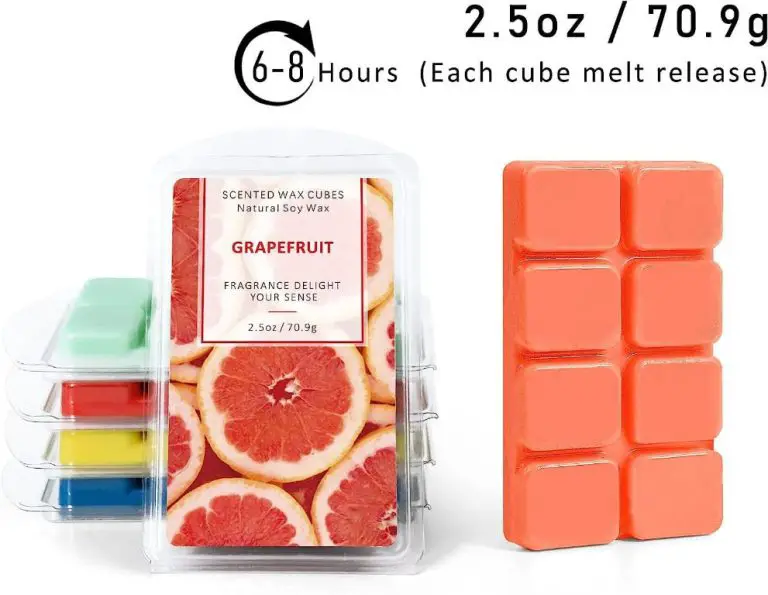How Long Does Backorder Usually Take?
What is a backorder?
A backorder is when a customer orders a product that is temporarily out of stock and unavailable for immediate shipping. The product is put on backorder, indicating the merchant will fulfill the order once inventory becomes available again (Investopedia, 2022).
Backorders occur for several reasons:
- Higher than expected demand – Popular products may sell out faster than expected, causing backorders.
- Supply chain issues – Manufacturing or distribution problems can disrupt inventory, leading to backorders.
- Seasonal fluctuations – Some products have seasonal demand cycles that can cause periodic backorders.
- Product recalls or discontinuations – Recalls or discontinued products can instantly create backorders.
Common situations leading to backorders include new product launches, holidays, sales promotions, supply disruptions, and rising raw material costs. Careful inventory planning and forecasting can help minimize backorders, but some level will always occur in business (Red Stag Fulfillment, 2022).
Typical backorder timeframes
The typical timeframe for a backorder can vary greatly depending on the item and industry. According to sources like Grit Global (https://gritglobal.io/blog/what-is-the-average-backoder-time-to-wait-for-items/), the average backorder takes between 14-21 days to be fulfilled. However, this can be longer or shorter depending on several factors.
Some of the key factors that affect backorder time include:
- The demand and availability of the product – Items that are scarce or have supply chain issues will take longer.
- The size/complexity of the item – Larger, more complex items like appliances tend to have longer backorder times.
- The supplier’s operations – How efficient they are at processing orders and getting items back in stock.
- Shipping distance – International backorders take longer due to customs and longer transit.
According to Reddit users (https://www.reddit.com/r/Bestbuy/comments/oy7nks/how_long_do_backorders_usually_take/), some backorders can take 1-3 months in industries like electronics retail. However, others note backorders for smaller items may only take 10-14 days.
The key is that backorder times can vary substantially, from just over a week to multiple months depending on the product and supplier. Setting proper customer expectations on typical timeframes is important.
Communicating with customers

Effective communication is essential when dealing with backorders to set proper expectations, provide status updates, and offer alternatives if the backorder timeline is excessive.
Be transparent upfront and let customers know if an item is on backorder before they place an order. Display notices on product pages and have real-time inventory visibility on your website so customers can see if an item is out of stock (Source). Set expectations by providing estimated timelines for when the product may be available again.
Send regular status updates to backordered customers. Let them know you appreciate their patience and when the next batch of inventory is expected to arrive. Consider providing an incentive like free shipping on their next order for the inconvenience. Always be empathetic in communications.
If the backorder timeline starts extending past 30 days or original estimates, contact the customer proactively. See if they want to wait longer or offer an alternative like a substitution or refund. Being transparent and providing options helps retain goodwill.
Expediting Backorders
Companies have a few options when it comes to expediting backorders to get products to customers more quickly:
Prioritization Policies: Some companies implement policies to prioritize certain customers or order types when dealing with backorders. For example, they may expedite orders for their top customers or loyalty program members first. Or they may prioritize expedited shipping orders over standard orders. Setting clear policies helps manage expectations. According to Fidelitone, “Communicating with transparency and setting proper expectations upfront is key.”
Premium Shipping: Offering faster shipping methods for an upcharge can incentivize customers to pay more to receive their backordered items faster. Options like overnight, 2-day or next day air shipping allow companies to expedite specific orders. The customer covers the added cost, while the company benefits from improved satisfaction.
Substitutions/Alternatives: Some companies will substitute a backordered product with a comparable or upgraded item to fulfill the order faster. Allowing substitutions or recommending alternative in-stock products to customers can help avoid long backorder delays. Of course this requires clear communication to manage expectations.
Preventing Backorders
Backorders can often be prevented by improving inventory management practices. Setting appropriate safety stock levels, implementing demand forecasting, and closely monitoring stock levels can help avoid running out of stock unexpectedly (TheFulfillmentLab 2023). Expanding your supplier network and sourcing from multiple vendors is another way to minimize risk of inventory shortages leading to backorders. This provides redundancy in case one supplier has issues meeting demand.
Finally, allowing customers to preorder out-of-stock items can be an effective backorder prevention strategy. This gives you visibility into future demand and the opportunity to plan inventory accordingly. According to research, “preorders accounted for 63% of video game sales in 2022” (InfoplusCommerce 2023). Allowing preorders enables you to capture demand even when an item is currently on backorder. Just be sure to communicate estimated delivery timeframes accurately when allowing preorders.
Backorder Challenges
Backorders can present several challenges for ecommerce businesses:
Lost sales – Customers may cancel their order or purchase the product elsewhere if it is not available right away. According to Disadvantages of Backorders in eCommerce And How to Avoid Them, the longer an item is on backorder, the less likely the customer will wait. This results in lost sales opportunities.
Poor customer experience – Customers expect fast and convenient service in ecommerce. Having to wait for weeks or months for an item can lead to frustration and dissatisfaction. According to Backorder meaning: pros and cons, communicating delays properly and setting expectations is key to ensuring a smooth customer experience.
Added operational costs – Handling backorders requires additional labor for customer service, order processing, inventory tracking, etc. Warehousing costs also go up if holding backordered inventory. According to 3 Pros and Cons of Backorders in Ecommerce, businesses must account for these added costs when weighing the benefits of allowing backorders.
Backorder Best Practices
When dealing with backorders, there are several best practices companies can implement to enhance the customer experience:
Transparent communication is key. Keeping customers informed on the status of their backordered item and when they can expect delivery helps manage expectations. Send regular email updates or allow customers to check order status online. According to Fidelitone, open communication up and down the supply chain helps reduce backorders.
Offering discounts or free shipping for the inconvenience of a backorder shows customers you value them. According to FedEx, discounts on future purchases or free expedited shipping once the item is back in stock are options.
Prioritize fulfilling backorders for loyal or high-value customers first. Segment your customers and focus on delighting VIPs, according to Cadre Technologies. This ensures your best customers remain happy.
Leveraging technology
Technology and automation can play a key role in improving backorder management. Warehouse management systems (WMS), order management systems (OMS), and enterprise resource planning (ERP) systems provide inventory visibility, order orchestration, and automation capabilities to streamline backorder processing.
A robust WMS gives real-time inventory transparency across the warehouse and supply chain. It can automatically allocate inventory as it becomes available to the oldest backorders first, ensuring a first-in-first-out (FIFO) model. WMS and OMS systems work together to release electronic orders to suppliers to replenish out-of-stock items. This automation eliminates manual processes and improves order accuracy.
Another benefit of WMS solutions is automated customer order updates. The system can automatically send order status notifications via email or SMS as an order moves from backordered to partially filled or completely fulfilled. This takes the manual work out of customer communication, improving satisfaction.
By leveraging the right technologies, companies can gain control and visibility into their backorders. Automating mundane tasks allows warehouse workers to focus on more value-added activities. And customers receive timely and transparent updates on order status. With the right solutions in place, backorders become easier to manage rather than a pain point.
Case studies
Companies can learn a lot from other organizations who have successfully managed backorders. For example, Bike Co. struggled with high backorder rates after demand for bicycles surged during the pandemic (https://www.ascm.org/ascm-insights/a-forward-thinking-approach-to-backorders). They implemented several changes to their inventory management system and order processing workflows that dramatically reduced backorders. Some of their keys to success included improving demand forecasting, increasing safety stock levels on high velocity items, switching to a dynamic inventory allocation system, and overcommunicating with customers on order status and expected delivery dates. After these changes, Bike Co.’s backorder rate dropped from over 20% to under 5% within a few months.
Another example is Clothing Co., an apparel retailer that frequently dealt with backorders due to relying on overseas suppliers with long lead times (https://gritglobal.io/blog/backorder-management-step-by-step). They decided to bring some manufacturing in-house for their highest volume and most problematic items. Although it required upfront investment, this gave them much better control over availability for key products. Clothing Co. also upgraded their website and order management system to provide real-time inventory visibility and more delivery date accuracy. Customers appreciated the transparency and were more willing to wait when given clear expectations. These operational changes reduced Clothing Co.’s backorders by over 30%.
As these examples demonstrate, backorders can be minimized through proactive strategies like improving forecasting, expanding capacity, optimizing inventory, enhancing supply chain flexibility, and communicating openly with customers. Companies who tackle backorders head-on can turn the problem into an opportunity to improve operations and increase customer satisfaction.
The future of backorders
Backorders are likely to remain an inevitable part of many retail and ecommerce operations. However, emerging technologies and omnichannel strategies are creating new opportunities to streamline backorder management and improve the customer experience.
One key trend is the rise of sophisticated inventory management systems that leverage AI and machine learning. These systems analyze past sales data, forecast demand, and help optimize stock levels across channels. This can greatly reduce the occurrence of backorders if implemented properly. According to the Association for Supply Chain Management, advanced data and inventory management is essential for minimizing backorders.
Another important development is the integration of multiple sales channels through unified commerce systems. This omnichannel approach gives retailers visibility into inventory across brick-and-mortar stores, websites, warehouses, and suppliers. If an item is out of stock online, store inventory can potentially fulfill the order and prevent a backorder. Offering multiple fulfillment options like ship to store or curbside pickup also reduces backorders.
Emerging technologies like AI-powered customer service chatbots can also improve the backorder experience. Chatbots can provide order status updates, expected wait times, and re-order or replacement recommendations if a backorder occurs. This creates transparency and convenience for the customer.
While backorders will remain an inevitable challenge, the future looks towards more streamlined technological solutions to minimize their occurrence and impact. Retailers who leverage omnichannel commerce and advanced supply chain tech will gain significant advantages in tackling the backorder dilemma.





